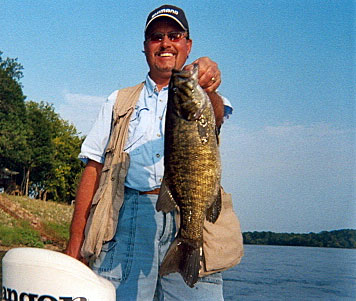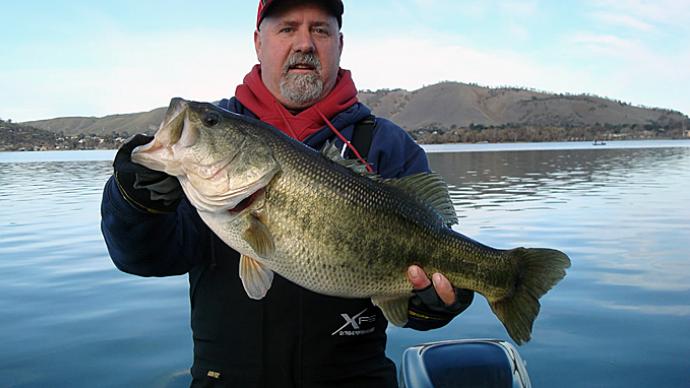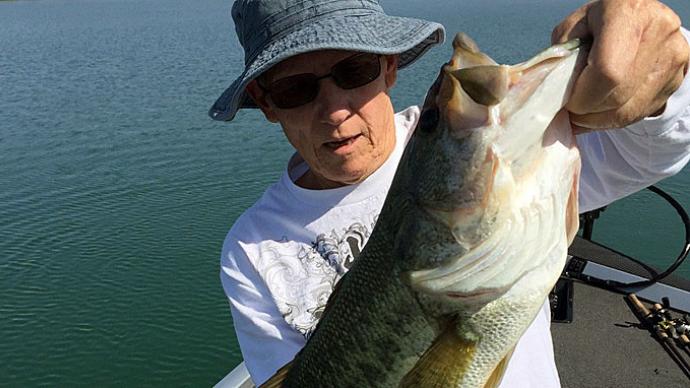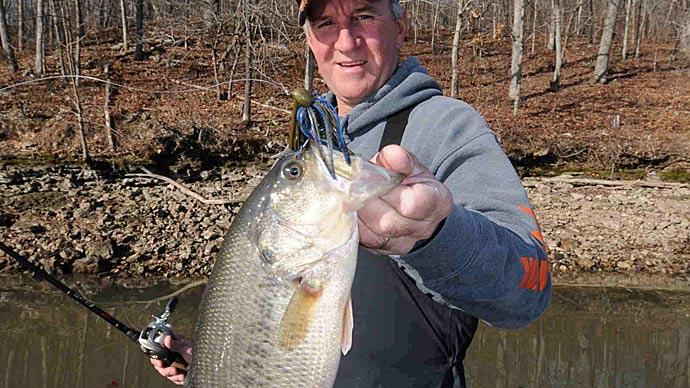
Dale Hollow has produced the two largest smallmouth bass ever recorded (11 pounds 15 ounces & 10 pounds 14 ounces). That makes this reservoir the odds on favorite for a new record, but other contenders in the region have produced fish over 10 pounds. One of the most notable is the Tennessee River, especially those portions running through Alabama and western Tennessee.
The Alabama State Record (10 pounds 8 ounces) was caught on Wheeler Lake below Guntersville Dam. Several trophy bass have been produced at Pickwick Lake below the Wilson Dam and on the river below the Pickwick Dam, technically Kentucky Lake.
Several reasons for predicting the next record fish might be caught on the Tennessee River. The most important is the demise of commercial catfishing. Due to the expansion of catfish farming throughout the Midsouth, commercial fishing is no longer economically infeasible. Commercial catfishing during the summer months undoubtedly resulted in removing several sizable smallmouths. Still, hard data is impossible to obtain because of legal restrictions on the capture of gamefish by a net.
A second factor that protects the species is that smallmouth in the Midsouth are VERY difficult to target during spring and summer, the time of year when the majority of "recreational fishermen" are out on the water. On top of that, for whatever reason, artificial lures do not produce many big bronzebacks on this river.
Another consideration is the unpredictability of water release by the TVA, especially on weekends. This factor makes it difficult for many fishermen to schedule outings in the region. During the best part of the season, October through March, weather and water flow can be very volatile. Also, many guys are hunting this time of year, and most weekend warriors do not fish much in late autumn or during the winter months.

Finally, the Midsouth has a unique combination of water temperature and baitfish production. This region is the southern border of the smallmouth range and near the northern boundary of the threadfin shad (known locally as yellowtail). Abundant forage combined with year-around feeding produces big fish over a relatively short period. A 5-pound smallie is ten- to fourteen years old in northern waters. In the South, smallmouth bass only live eight to ten years, but they may attain a weight of 5 pounds or more by age four. (David Hays' fish was estimated to be thirteen years old, which undoubtedly contributed to its unique size.)
So, the variables affecting fishermen's ability to get out and fish make this river system less desirable as a destination for smallmouth aficionados. Add to all of this the fact that those who target the big brown fish never keep one...NEVER! All these factors make this stretch of the Tennessee River, a prime candidate for producing the next World Record Smallmouth Bass.
I hope your next fish is your best fish. Good luck and good fishing!




